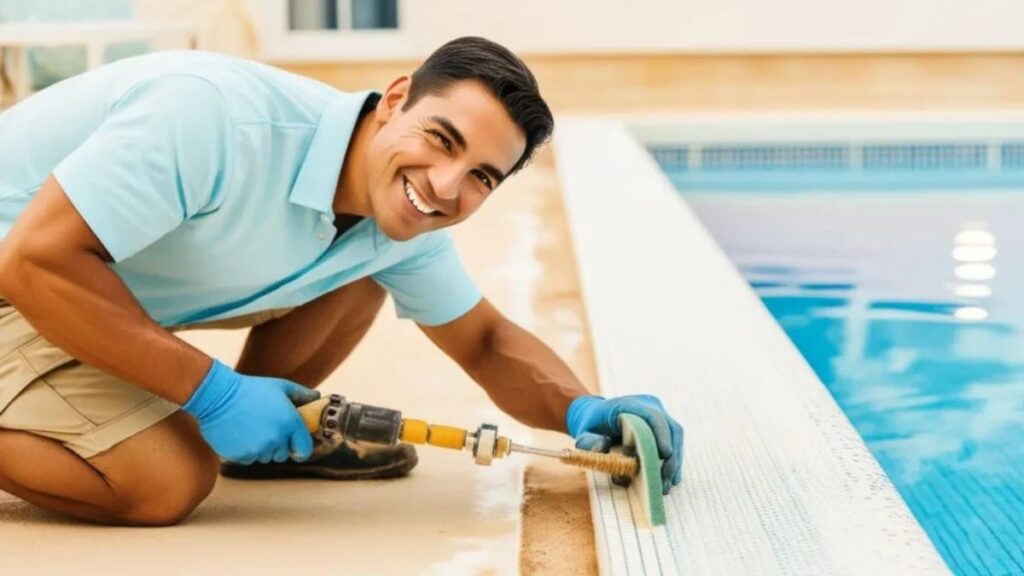Owning a swimming pool brings countless hours of relaxation, recreation, and family bonding. But like any major home feature, pools require regular upkeep to remain safe, beautiful, and functional. Over time, wear and tear are inevitable—whether it’s a cracked tile, a leaking liner, or a faulty pump system. This is where pool repair becomes not just an option, but a necessity.
The longer issues are left unaddressed, the more extensive (and expensive) they can become. From surface blemishes to structural concerns, timely repairs ensure your pool remains a long-term asset rather than a liability. In this comprehensive guide, we’ll walk you through the most common pool problems, signs you need repairs, repair methods, cost expectations, and how to choose the right professional for the job.
Understanding the Importance of Timely Pool Repair
Your swimming pool is constantly exposed to the elements, including UV rays, fluctuating temperatures, ground movement, water chemistry imbalances, and heavy usage. All these factors can contribute to gradual deterioration.
Here’s why prompt pool repair is critical:
- Prevents escalation: Minor issues like small leaks or loose tiles can quickly evolve into major structural problems.
- Maintains water safety: Cracks or damaged components can harbor bacteria or affect water circulation, compromising health.
- Protects equipment: Malfunctioning systems such as filters, pumps, or heaters often affect other components if not fixed quickly.
- Preserves aesthetics: Damaged plaster, chipped tiles, or stained surfaces detract from your pool’s appearance and value.
- Avoids higher costs later: Early intervention is usually more cost-effective than extensive restoration.
By staying proactive with pool repair, you protect your investment and maximize the enjoyment of your backyard space.
Common Pool Problems That Require Repair
Swimming pools are complex systems, combining structural, mechanical, and chemical components. Here are the most frequent issues that demand attention:
1. Leaks
Water loss that exceeds normal evaporation is often the first sign of a leak. Leaks can occur in:
- Plumbing lines
- Pool shell or liner
- Skimmer and return jets
- Pool equipment (filters, pumps, valves)
Leaks not only waste water but can undermine the pool’s foundation if left unresolved.
2. Cracks in the Pool Shell
Structural or surface cracks may appear in concrete or gunite pools due to shifting ground, aging, or poor construction. These cracks can lead to water seepage and should be sealed or resurfaced.
3. Damaged Pool Equipment
Your pool’s circulation, heating, and filtration systems are its lifeline. Common equipment issues include:
- Pump failure or noise
- Filter clogs or inefficiency
- Malfunctioning heaters
- Broken chlorinators or salt systems
Professional diagnosis is often required to pinpoint and resolve equipment failures.
4. Tile and Coping Issues
Tile may pop off or crack due to expansion, age, or improper installation. Coping (the edge between the pool and deck) can also become loose, which not only looks unsightly but creates a tripping hazard.
5. Surface Stains and Discoloration
Stains can be caused by:
- Metal content in the water
- Algae growth
- Chemical imbalances
- Organic matter such as leaves or dirt
Proper diagnosis helps determine whether staining can be treated chemically or if resurfacing is needed.
6. Liner Damage
Vinyl liner pools may suffer from:
- Tears or punctures
- Fading and discoloration
- Stretching or wrinkling
Liner replacement may be necessary every 7–10 years, depending on care and exposure.
Signs Your Pool Needs Repair
While some damage is obvious, other signs are subtle. Here’s what to watch for:
- Unexplained drop in water level
- Visible cracks or gaps in the pool structure
- Peeling plaster or bubbling surfaces
- Pump making loud or unusual noises
- Decreased water circulation or poor filtration
- Constant need for chemical adjustments
- Tile or coping movement or shifting
- Unusual stains or discolored patches
- Malfunctioning pool lights or jets
If you notice any of these red flags, it’s time to contact a professional for a proper inspection and pool repair estimate.
Pool Repair Solutions: Methods and Options
Depending on the type and severity of the damage, repair methods can range from simple fixes to major renovations. Here are some of the most common solutions:
✅ Leak Detection and Sealing
- Pressure testing is used to locate plumbing leaks.
- Dye testing can identify shell or liner leaks.
- Epoxy, sealant, or patching compounds may be used for minor leaks.
- Pipe or shell replacement is needed for more severe cases.
✅ Surface Resurfacing
- Pool resurfacing is recommended for rough, cracked, or stained finishes.
- Materials include plaster, quartz, pebble, or tile.
- Resurfacing not only restores appearance but also prevents water absorption and leakage.
✅ Tile and Coping Repair
- Loose or missing tiles are re-bonded or replaced.
- Coping may be reseated, replaced, or regrouted.
- Expansion joints may also need resealing to prevent movement-related damage.
✅ Equipment Repair or Replacement
- Faulty motors, pumps, filters, and heaters can often be repaired.
- In some cases, upgrading to modern, energy-efficient systems is more cost-effective.
✅ Liner Patch or Replacement
- Small tears can be patched underwater.
- Large or aged liners may need full replacement.
- New liners can also offer a visual refresh.
✅ Deck and Drainage Repairs
- Cracked decking, pooling water, or unsafe surfaces around the pool may require leveling or resurfacing.
- Drainage solutions help prevent water from damaging the pool’s foundation or surrounding landscape.
Cost Expectations: What Does Pool Repair Cost?
Pool repair costs vary significantly depending on the type of repair, materials involved, pool size, and access to the area. Below are average price ranges:
| Repair Type | Estimated Cost Range |
| Leak Detection | $300 – $1,200 |
| Crack Repair | $250 – $5,000+ |
| Pool Resurfacing | $5,000 – $15,000+ |
| Pump or Filter Repair | $200 – $1,000 |
| Tile Repair or Replacement | $500 – $3,000 |
| Vinyl Liner Replacement | $3,000 – $7,000 |
Keep in mind, preventive repairs are typically far less costly than emergency restorations or full-scale renovations.
DIY vs. Professional Pool Repair
Some pool owners may attempt do-it-yourself fixes to save money. While this may be acceptable for very minor issues (like patching a small liner tear or replacing a light bulb), most repairs should be left to licensed professionals.
DIY repairs risk:
- Misdiagnosing the issue
- Voiding equipment warranties
- Failing to meet safety codes
- Causing further damage
Hiring an experienced pool technician ensures your pool is repaired correctly, safely, and in compliance with regulations. Many contractors also offer warranties on their work.
Choosing the Right Pool Repair Professional
Finding a trustworthy specialist is essential. Here’s what to look for:
- Experience: Choose someone with a strong track record in diagnosing and repairing pool issues.
- Certifications: Look for credentials from organizations like the Pool & Hot Tub Alliance (PHTA).
- Licensing and insurance: Confirm the contractor is fully licensed and insured for protection.
- Detailed estimate: Get a written scope of work and cost breakdown.
- Customer reviews: Check testimonials, ratings, and references from other pool owners.
- Warranty: A good contractor stands behind their work and offers clear warranties.
A reputable technician will walk you through the repair process, answer your questions clearly, and provide realistic timelines and expectations.
Preventive Maintenance to Avoid Repairs
Once your pool is back in top condition, proper care can help reduce the need for future repairs:
- Test and balance water weekly
- Inspect equipment regularly
- Brush walls and vacuum debris
- Keep filters clean and clear
- Maintain proper water level
- Schedule annual inspections
- Cover the pool during off-season
Preventive maintenance not only extends the life of your pool but helps you spot early signs of damage before they become costly issues.
Final Thoughts
Pool ownership brings many rewards, but it also comes with responsibilities. No matter how well a pool is constructed, over time, repairs are inevitable. Ignoring small problems can turn a relaxing backyard oasis into a costly headache. That’s why understanding the signs, knowing what’s involved, and hiring the right help are essential steps in preserving your investment.
Whether it’s repairing a leak, resurfacing plaster, or replacing outdated equipment, pool repair ensures your pool remains a safe, functional, and inviting space for years to come. When in doubt, trust professionals who specialize in this field to provide lasting solutions with peace of mind.
If you’ve noticed damage, wear, or inefficiencies in your pool’s operation, now is the time to take action. Schedule a professional inspection, weigh your options, and restore your pool to its full potential with expert pool repair.







